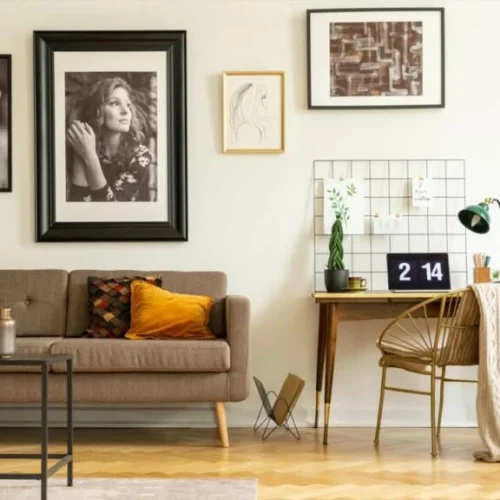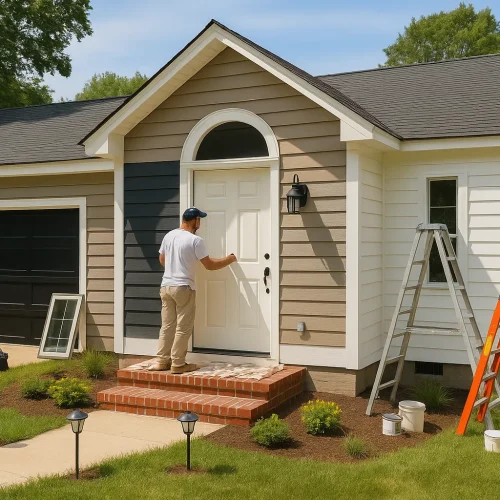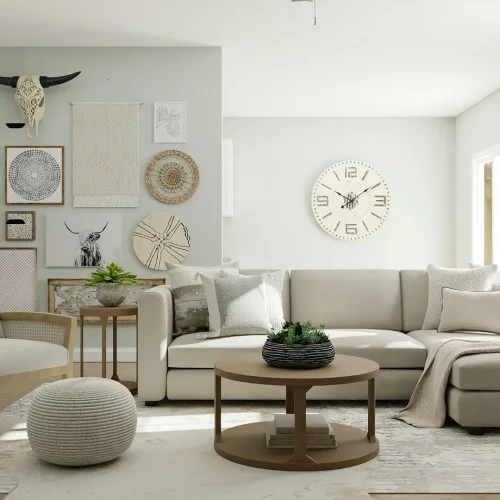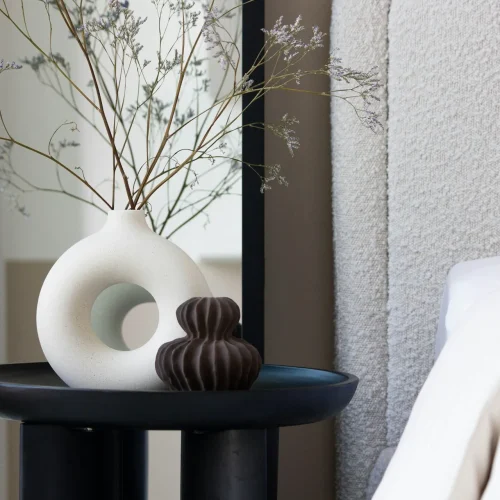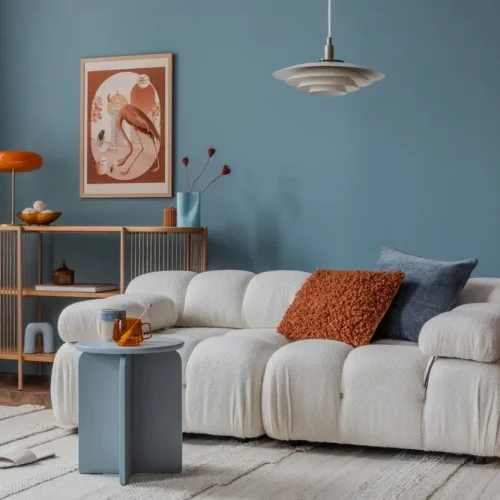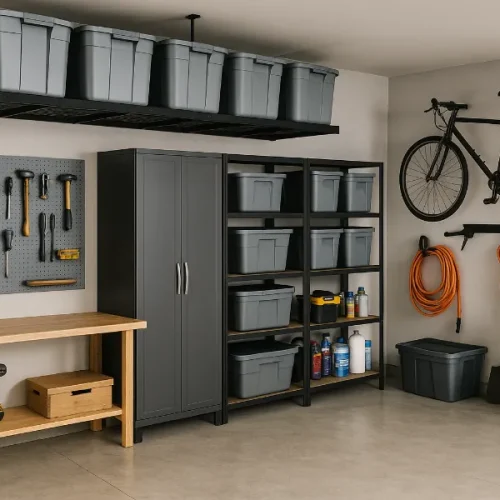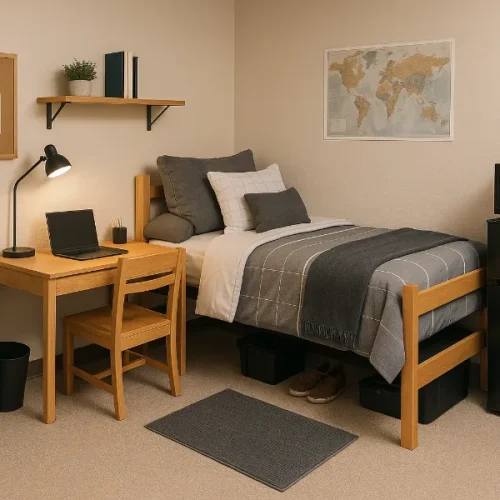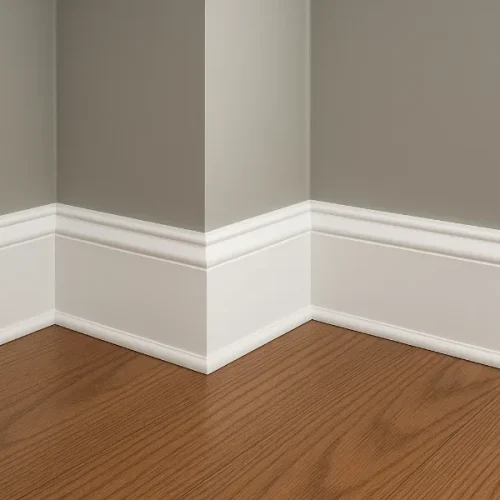The mixed metals in bathroom trend is here to stay—and for good reason. Bathrooms used to follow a strict rule: all finishes should match. Chrome faucets matched chrome towel bars. Brass hardware meant brass lighting. While this created a clean, uniform look, it often lacked depth and personality. Thankfully, design has evolved. Today, mixing metals in your bathroom is not only accepted, but encouraged. It’s one of the easiest ways to elevate your space from builder-basic to thoughtfully curated.
But mixing metals isn’t about throwing finishes together at random. Do it wrong, and your bathroom looks chaotic. Do it right, and you get a room that feels layered, timeless, and effortlessly stylish. Let’s dive into why this trend works, how to approach it, the best metal pairings, and insider tricks designers swear by.
Why Mix Metals in a Bathroom?
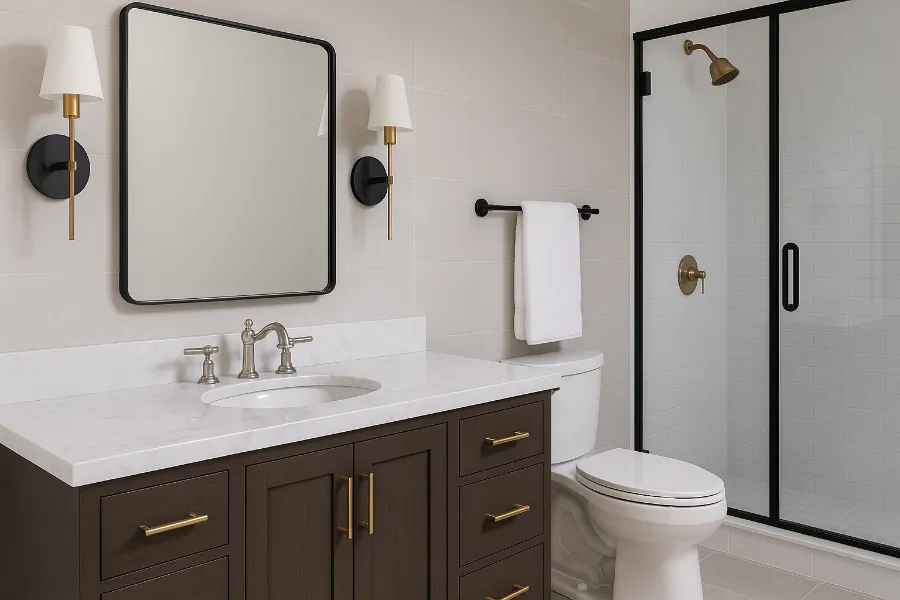
Mixing metals adds texture, dimension, and interest. A bathroom filled with a single finish can feel flat, sterile, or safe. When you layer different tones—like warm brass with cool nickel—you instantly create contrast and depth.
Here’s what makes the mixed metals in bathroom approach so appealing:
- Visual interest – Contrasting finishes guide the eye around the room.
- Personality – The mix feels curated instead of cookie-cutter.
- Flexibility – You’re not locked into one finish for every fixture.
- Timelessness – Properly chosen pairings never feel outdated.
Imagine a polished nickel faucet glinting against brass cabinet pulls and a matte black mirror frame. The combination feels designed, not accidental.
Guidelines for Mixing Metals in Bathroom Design
Before you start swapping out hardware, there are a few guidelines that make all the difference. Think of them as design principles, not strict rules.
Stick to Two or Three Metals
Start with two finishes if you’re new to the idea. For larger bathrooms, you can pull in a third, but any more risks looking cluttered. A dominant finish (often on faucets or shower hardware) should anchor the room. Accent finishes on lighting, mirrors, or cabinet hardware add contrast.
Don’t Mix Metals Within the Same Category
Designers often divide bathroom metals into three categories:
- Architectural – Doorknobs, window latches.
- Functional – Faucets, shower hardware.
- Decorative – Lighting, cabinet pulls, mirrors.
Mixing finishes across categories works beautifully. For example, black sconces (decorative) paired with brass vanity hardware (decorative) balance nicely with polished nickel faucets (functional). But don’t mix two different finishes within the same category—it tends to look disjointed.
Repeat Each Metal at Least Twice
If a finish appears only once, it sticks out like an afterthought. Use each chosen metal at least twice. For instance, if you introduce matte black with a mirror, repeat it in the sconces or drawer pulls. This creates rhythm and cohesion.
Sprinkle, Don’t Cluster
Distribute your finishes throughout the room rather than grouping them in one area. A chrome shower head shouldn’t live alone—bring that silver tone to the vanity faucets or a mirror frame. Spreading metals ensures balance.
Best Metal Combinations for Bathrooms

Not all pairings are created equal. Some combinations feel natural and timeless, while others clash. Here are tried-and-true combos for mixed metals in bathroom design:
Brass + Polished Nickel
This pairing is a designer favorite. Brass brings warmth, while polished nickel offers a cooler, refined shine. Together, they strike a perfect balance between cozy and upscale.
Chrome + Matte Black
Crisp chrome pairs beautifully with the grounding quality of matte black. This duo is perfect for modern bathrooms where contrast is key.
Satin Nickel + Brass
Both finishes carry warm undertones, but their different tones (silvery vs. golden) complement each other instead of competing. A brushed nickel faucet with brass sconces creates an elegant, understated vibe.
Aged Brass + Matte Black
For a bold, dramatic statement, this combination shines. Black’s neutrality makes aged brass pop, giving the bathroom a collected, high-end look.
Undertones and Finishes: Avoiding Clashes
One of the biggest mistakes homeowners make is ignoring undertones. Metals come in both warm and cool tones:
- Warm metals: Brass, bronze, gold, copper
- Cool metals: Chrome, nickel (brushed or polished)
- Neutral metals: Black, stainless steel
Mixing warm with cool works well if both share similar undertones. But pairing two cool tones—like chrome and nickel—often looks accidental rather than intentional.
Also consider finish type: brushed, polished, or matte. Don’t mix two polished finishes in the same family, like shiny brass with chrome, unless you’re aiming for an ultra-glam look. Instead, vary textures: brushed nickel with polished brass, or chrome with matte black. The contrast feels deliberate.
Common Mistakes When Mixing Metals in the Bathroom
Even with the best intentions, it’s easy to go wrong. Here are pitfalls to avoid:
- Mixing two finishes from the same family (like chrome + polished nickel). They’re too close and can look mismatched.
- Not repeating metals. A lone finish feels like a mistake.
- Clustering finishes. Don’t let one side of the room carry all the brass while the other side is all chrome.
- Ignoring scale. Bold finishes like brass should be balanced with subtler accents.
- Switching brands on the same finish. A brass faucet from one brand may look completely different from another’s “brass.” Stick with one brand per finish category.
Designer-Approved Tips for Pulling Off Mixed Metals
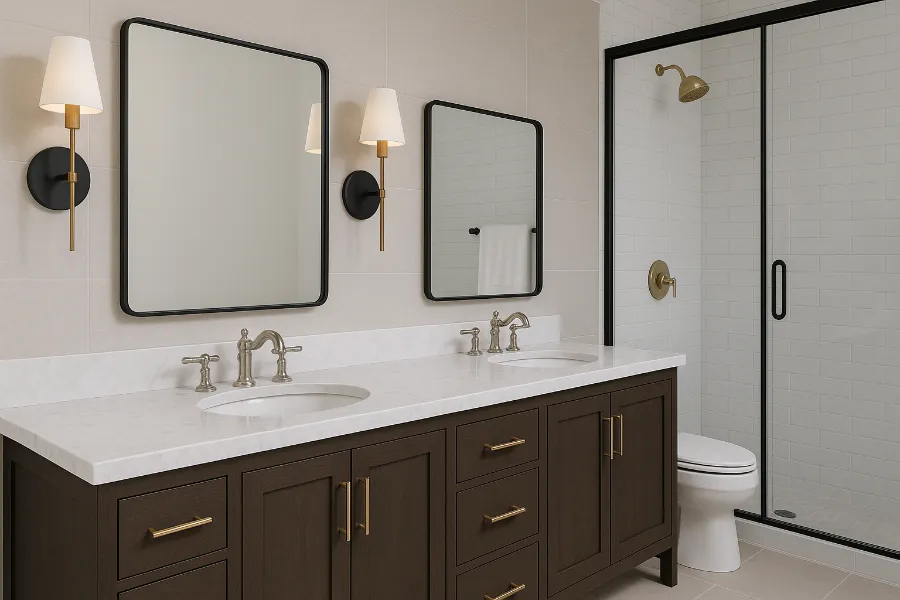
Interior designers offer some practical tricks to ensure success:
- Start with your dominant finish. Usually the faucet or shower hardware. Build accents around it.
- Use cabinet color as a guide. Brass pairs beautifully with blue or black vanities, while chrome and nickel shine against white or gray.
- Go bold with accents. A striking black mirror frame or brass sconces can tie the room together.
- Use dark metals as a neutral. Black and oil-rubbed bronze mix seamlessly with almost anything.
- Test combinations before committing. Lay hardware samples side by side to see how they play together in your lighting.
When Not to Mix Metals
As much as mixing adds character, sometimes sticking to a single finish is the right call. In small bathrooms where visual space is limited, too many finishes can overwhelm. A streamlined look also works in ultra-modern spaces where minimalism is key.
And remember, matching doesn’t mean boring. Polished nickel alone, for example, carries timeless sophistication.
Final Thoughts: Balance and Personality
The mixed metals in bathroom trend thrives because it balances individuality with timeless design. It allows you to bring personality into one of the most functional rooms in the house, without going overboard.
Here’s the takeaway:
- Limit yourself to two or three finishes.
- Repeat each finish at least twice.
- Avoid clashing undertones or same-family pairings.
- Distribute metals evenly for flow.
Mixing metals is an art, but one that anyone can master with a little planning. Done right, your bathroom becomes more than just a utility space—it becomes a reflection of your style, layered with warmth, contrast, and sophistication.


